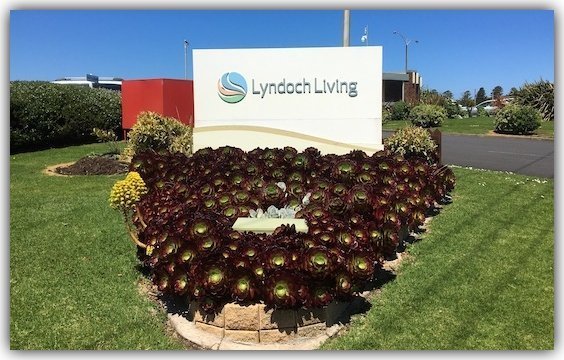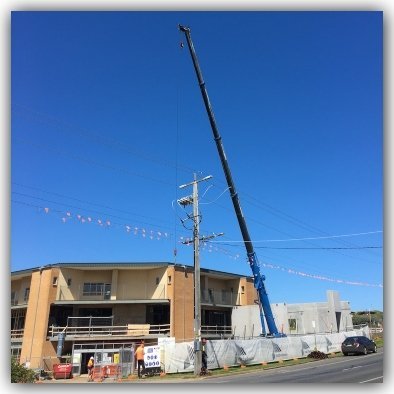
Carol Altmann – The Terrier
Here’s a little figure that slipped by without too many people noticing: last year Lyndoch Living aged care recorded a deficit of $1.772 million – its largest loss in recent years.
You won’t find this figure in the Lyndoch 2018 annual report online, nor will you find it any media reports, but it can be sifted from a federal website that collects the financial records of charities. Such is my reading list.
It was here I learned that Lyndoch went from an $846,563 surplus in 2017, to a $1.772 million deficit in 2018. It is the third deficit in the past four years under CEO Doreen Power and her board.
To be clear, Lyndoch Living is a not-for-profit, publicly funded body that is not designed – thankfully – to record fat surpluses on the back of caring for our infirm and elderly.
But nor is it intended to run at a loss without a detailed explanation.
As it happens, the 2019 Lyndoch AGM is next Tuesday (Oct 29), so I wanted to dive into last year’s figures before we find out how Lyndoch is faring this year.
And before I go any further, I also want to make it super clear that Lyndoch Living is full of terrific, hard-working staff who are devoted to making the lives of residents the best they can be. (Hello to you, staff! I know many of you read The Terrier, but are unable to comment. That’s okay, I see you.)
Lots of great stuff happens at Lyndoch.
But it is also blindingly obvious that Lyndoch Living is changing, and Ms Power has, since taking over in January 2015, had her foot to the pedal with big-buck projects and a very different management style.

In the past 12 months in particular, Lyndoch Living has been on a buying spree.
It bought the May Noonan Hostel in Terang, and the Warrnambool Medical Clinic practice, and the Health Spot practice in Warrnambool, and in the next couple of years, plans to build a new “super clinic” on Hopkins Rd as part of a full-blown, $100 million masterplan to be rolled out over the next eight years.
(Ms Power has a liking for “super clinics”, having overseen an $8 million one in her last job, at Plenty Valley.)
I’m all for a spruce up, but $100 million is serious money.
Lyndoch’s corporate area was first in line for an upgrade – funny how that happens – and now work on Swinton Wing is in full swing, at an expected cost of $11 million.
The simple question behind this head-spinning, full-throttle expansion is: where is the money coming from?
I want to be reassured, as I am sure others do, that this is not yet another case of corporate grandstanding, with big-ticket, capital works projects blitzing the basics like having enough qualified staff looking after our old folk.
(Watch the short Lyndoch Living video below for the full masterplan shebang.)
The Lyndoch Waterfront Living apartments, which are now five years old, are proof of where glamorous projects can stall.
Stage two of that multi-million dollar project has been put on ice after stage one failed to sell out and several apartments on the south side, facing Marfell Rd, remain empty.
Which brings me back to the deficit.
The deficit is just one part of Lyndoch’s big financial picture, but it is also a keyhole for us to peek through, to see what else is happening to our much-loved Lyndoch that has been a part of the local landscape for more than 60 years.
Here is some of what I have been able to unpick so far:
One of the reasons behind the $1.77 million deficit was the cost of “community based client services” going up by almost a third, or $1.2 million.
I emailed Ms Power and the Lyndoch board president, Kerry Nelson, last Wednesday for more detail about these services and the reason for the cost increase. I didn’t get a response.
It begs the question though, with growing demand for home-based care, why spend a fortune on a “super-clinic” and not these services?
Another reason for the deficit was a drop in the value of a Lyndoch building by $1.75 million.
I asked Ms Power and Ms Nelson more about this too, but there was no response.
Overall, Lyndoch last year had assets valued at a whopping $99.7 million – including $6.6 million in cash – and its liabilities were $36.9 million, leaving its overall position at $62.7 million.
That is a nice, fat cushion, but it is also the lowest bottom line in the past five years – in 2014, the total equity was $4 million higher at $68.9 million.
Sorry for so many figures, but it is the only way to pull this apart.

Here is one more interesting stat: the amount spent by Lyndoch each year on food for clients and residents.
In 2014, Lyndoch spent $1.021 million on food and in 2015 and 2016 it fell below the $1 million mark.
Last year, it spent $1.003 million on food, which is still less than it was five years ago in 2014. Why?
Has a contract changed? The cost of bulk groceries gone down? Are they being bought from elsewhere? Are chia seeds cheaper than homemade chicken soup?
(I was going to put these questions to Ms Power and Ms Nelson as well, but after not receiving any answers thus far, it seemed pointless.)
I will leave aside staffing figures, staff changes and staff morale for now – that is a whole separate story to come shortly – but having pored over a swag of Lyndoch financial reports and deficits, I still don’t know the answer to my simple question:
Where is the money for the $100 million masterplan coming from?
I did ask Ms Power and Ms Nelson this question, but there was no response.
Unfortunately I am going to be away on Terrier duties and unable to attend the Lyndoch AGM at 4pm next Tuesday, but perhaps someone will throw up their hand and ask this question because remember, Lyndoch belongs to us, the south-west community.
In the meantime, I am going to take a punt and say “the bank”, which means “loans”, which means “debt”.
If so, is wading into deep debt a good idea and will it vastly improve the daily lives of those in Lyndoch’s care? That, Terrier readers, is the $100 million question.
If you would like to support the work of The Terrier, please consider throwing something in the tip jar.


I can see where this is heading already. In a few years with a massive and growing debt the only viable solution (we will be told) is to sell Lyndoch to a large for profit corporation who will save Lyndoch from collapse and all of our aged friends (and I might be one of them) being forced onto the streets. It seems to happen so often in clubs and not for profits when they are being run by a person or a committee who are determined to create a legacy.
They see this as a business, to make money. We however see it as a home for our loved ones. Which is their priority?
Where is the car parking in the concept plans ,obviously there won’t be many staff left by the time the $100m vision is completed, but even so there isn’t much for those checking on the wellbeing and feeding their loved ones .
Hi Roy, car parking for 120 cars is included in the “super clinic”. You can read more about what is planned here. https://www.lyndoch.org.au/lyndoch-livings-acquisition-of-the-warrnambool-medical-clinic/
Carol keep up the good work ,so much hard work in past years. Please stop this rot. (Edited)
Hi carol
Thanks yes I see that now but all I would add is that many of the visitors to Lyndoch are themselves eldery and have their own issues so any car parking needs to have close access to wherever their loved ones are located ,not a few hundred metres away .
Even the current car parking is too far away for many ,and those blasted Lyndoch buses surely they could be parked elsewhere ,even in the short term.
Keep up your good work, Carol.